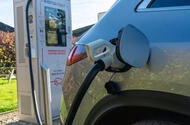What’s Changed for Company EV Drivers Claiming Charging Costs?
If you drive a company electric vehicle (EV) in the UK, you’ve probably felt the pinch when it comes to claiming back charging expenses. For years, the system was simple—but not always fair. HMRC’s single-tier Advisory Electric Rate (AER) didn’t reflect the real-world costs, especially for those relying on public chargers. That’s finally changing.
Why Did HMRC Introduce Separate Rates for Home and Public Charging?
Let’s be honest: charging at home and charging on the road are two very different beasts. Home electricity rates are generally lower and more predictable, while public charging—especially on rapid networks—can be pricey and varies widely. Until now, company EV drivers could only claim a flat rate, regardless of where they plugged in. The result? Many were left out of pocket, particularly those without access to home charging.
After mounting criticism from drivers and industry groups, HMRC has introduced a two-tier system. Starting 1 September, you can claim 8p per mile for home charging and 12p per mile when using public chargers. It’s a small change with big implications, especially for those who spend a lot of time on the road.
How Are These New Rates Calculated?
You might wonder how HMRC landed on these numbers. The answer is a blend of real-world data and a bit of math. Every quarter, the rates will be updated based on:
– The average efficiency of electric company cars over the past three years (currently 3.6 miles per kWh)
– Domestic energy prices, as reported by the Office for National Statistics (currently 27p per kWh)
– The Zapmap Price Index for public chargers at 50kW or less (currently 51p per kWh)
This approach aims to keep the rates in line with actual costs, rather than lagging behind as energy prices fluctuate. It’s a step toward fairness, though not without its quirks.
Does This System Reflect Real-World EV Efficiency?
Here’s where things get interesting. Not all EVs are created equal when it comes to efficiency. For example, the Mercedes-Benz CLA—one of the most efficient EVs in the UK—gets about 5.0 miles per kWh. On a public charger, that works out to roughly 10p per mile. Compare that to the Mercedes EQS SUV, which manages just 2.8 miles per kWh, costing 18p per mile on the same charger.
So, while the new AER rates are more generous than before, they still don’t perfectly match every scenario. If you’re driving a less efficient EV or regularly using pricier chargers, you might still find yourself paying out of pocket.
What About Ultra-Rapid Charging and Higher Costs?
One big gap in the new system is ultra-rapid charging. These chargers—often found at motorway service stations—can cost a lot more than standard public chargers. According to the latest Zapmap data, the average price for ultra-rapid charging is 76p per kWh, nearly 50% higher than the rate used for the AER calculation. For an efficient EV like the CLA, that’s about 15p per mile—well above the 12p per mile you can claim.
This means that if you rely on ultra-rapid chargers for long journeys, the new rates still won’t fully cover your expenses. It’s a reminder that while the system is improving, it’s not perfect.
Can Fleets Pay More Than the Advisory Rates?
Absolutely. If your company or fleet can prove that the actual cost of charging is higher than the AER, they’re allowed to reimburse you at a higher rate. But there’s a catch: you’ll need to provide evidence to HMRC that the higher rate reflects your real expenses. If not, any excess payment could be taxed as additional income. It’s a bit of extra admin, but for those regularly using expensive charging options, it might be worth the effort.
How Does This Compare to Fuel Rates for Petrol and Diesel Cars?
It’s worth noting that the system for petrol, diesel, and LPG vehicles is far more granular. Advisory Fuel Rates (AFRs) vary by fuel type and engine size, and even apply to hybrids. This level of detail has been missing for EVs, despite the fact that their efficiency can vary just as much as traditional cars. The new split rates are a step in the right direction, but there’s still room for improvement.
What Are Industry Experts Saying?
The reaction from fleet professionals has been overwhelmingly positive. Paul Hollick, chair of the Association of Fleet Professionals, called the change “very good news for fleets.” He highlighted the long-standing efforts by industry groups to push for a fairer system that recognizes the real costs of public charging. The British Vehicle Rental and Leasing Association (BVRLA) has also been instrumental in advocating for these changes.
What Should Company EV Drivers Do Now?
If you drive a company EV, it’s time to check in with your fleet manager or HR department. Make sure they’re aware of the new rates and understand how to claim them. Keep detailed records of your charging habits—where, when, and how much you’re paying—especially if you use public or ultra-rapid chargers frequently. If your actual costs are higher than the advisory rates, talk to your employer about the possibility of claiming more (with proper documentation, of course).
The Bottom Line: A Step Forward, But Not the Finish Line
The new HMRC rates for company EV drivers are a welcome improvement, especially for those who rely on public charging. They reflect a growing recognition that one-size-fits-all doesn’t work in a world where EVs and charging options are so varied. Still, there are gaps—particularly for drivers using ultra-rapid chargers or less efficient vehicles.
As the EV landscape continues to evolve, expect these rates and policies to keep changing. For now, though, company EV drivers can breathe a little easier knowing that their expenses are finally getting a fairer shake. And if you’re ever unsure, don’t hesitate to ask questions or push for what’s fair—after all, the system only gets better when real drivers speak up.

